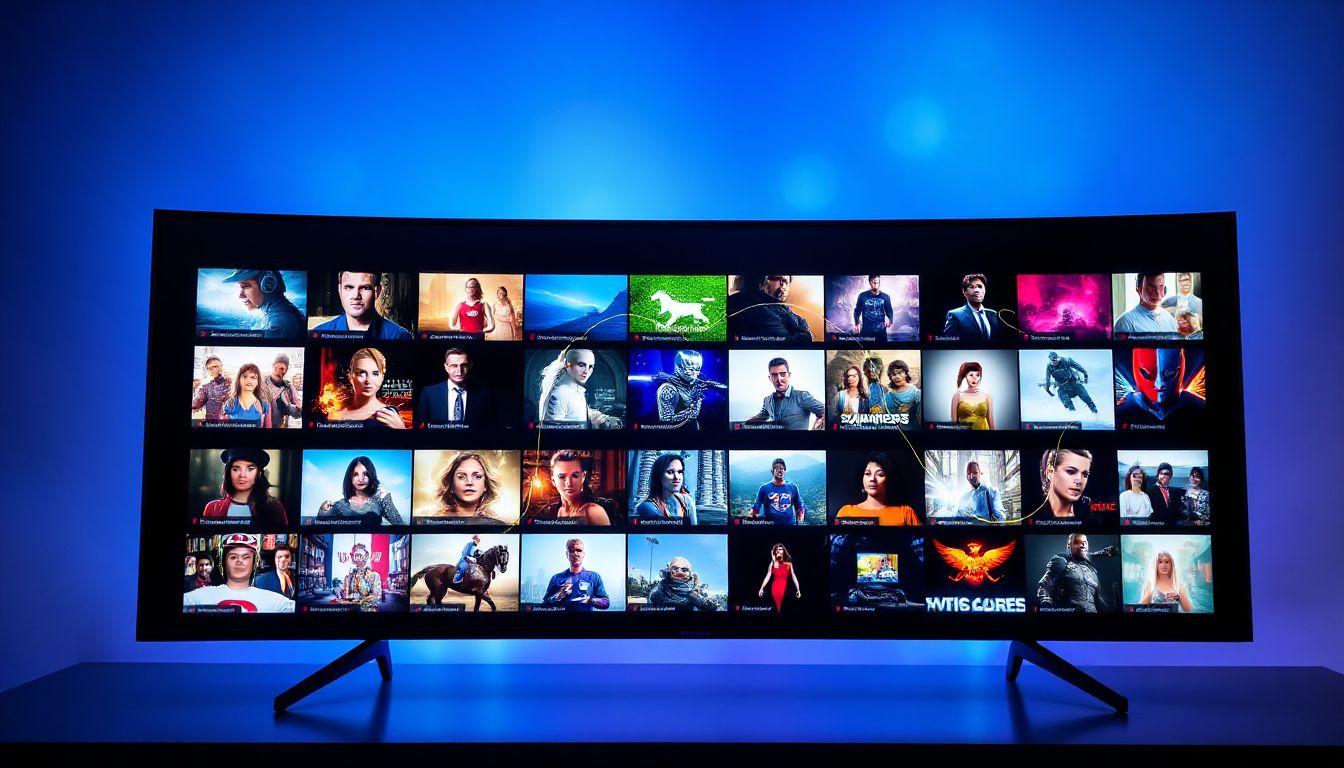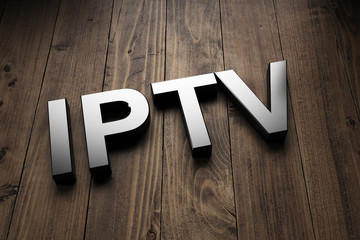
Video IPTV : Ultimate Guide to Revolutionizing Entertainment
Video IPTV , or Internet Protocol Television, has changed how we watch video content. It moves past old cable and satellite TV. Video IPTV uses the internet to bring live shows, movies, and series right to your screens. This change gives you amazing freedom. It offers a huge amount of content, and often, it costs less too. If you’re cutting the cord from cable or just want better TV, knowing about IPTV helps you find entertainment’s future.
Moving to Video IPTV is more than just a new way to get TV. It’s about getting an entertainment system that fits you and is easy to reach. From smart TVs and streaming boxes to phones and tablets, Video IPTV puts your favorite shows and channels where you have internet. This guide will explain what IPTV is, how it works, what’s good about it, how to pick a service, and what to expect as this tech keeps growing.
What is IPTV? Understanding the Technology
Defining IPTV: More Than Just Streaming
Video IPTV means Internet Protocol Television. It’s a way to send TV shows and movies over the internet. This is different from old ways like cable, satellite, or antenna TV. Those methods use special wires or signals from space. Video IPTV uses your regular internet connection.
You can watch live TV channels, movies you pick on demand (VOD), and even shows you missed (catch-up TV). Think of it like a giant library of entertainment, all sent through your home internet. This makes it super flexible for viewers.
How IPTV Works: The Technical Backbone
Video IPTV uses internet networks to send video. Your TV shows break down into small pieces of data, like tiny packets. These packets travel across the internet and then put themselves back together on your device. This happens so fast you don’t even notice.
Sometimes, a single stream goes to one person (unicast). Other times, a stream goes to many at once (multicast), like for a live sports event. For this to work well, you need a strong internet connection. You watch IPTV on special set-top boxes, smart TVs, or apps on your phone or tablet.
Key Differences from Traditional TV
Video IPTV offers many features that old TV just doesn’t have. For one, it’s very interactive. You can pause live TV, go back to watch a scene again, or pick from a library of movies whenever you want. Old TV typically just shows what’s on at that moment.
You get way more choices with IPTV. Many services offer niche channels, international news, and huge movie libraries you can’t get anywhere else. Plus, you can watch it on many devices, not just your living room TV. This means you can watch TV anywhere you have internet access. Also, people often find IPTV plans cost less than big cable packages, saving them money each month.

The Advantages of hoosing IPTV
Unrivaled Content and Flexibility
Video IPTV opens up a world of channels. You can find everything from live sports and global news to premium movies and shows. It’s not just live TV either. Many services have huge video-on-demand libraries. You can pick movies or past shows whenever you like.
Missed your favorite show? No problem. Catch-up TV features let you watch programs that aired days ago. You can watch Video IPTV on many devices: your smart TV, phone, tablet, or computer. Some services even let you set up different profiles for family members, so everyone gets recommendations for what they like.
Cost-Effectiveness and Value
Switching to Video IPTV can really save you money. Many families pay high prices for cable or satellite TV each month. IPTV services often offer lower monthly fees. You might even find good deals that bundle channels you actually want.
Plus, you might not need to rent special equipment from a cable company. This means fewer fees for extra boxes. People can often save $50 to $100 per month by moving to an IPTV service. This is especially true if they pick a plan that fits their needs instead of a big, expensive cable package.
Enhanced Viewing Experience and Features
Video IPTV brings top-notch picture quality right to your screen. Many services offer high-definition (HD) and even Ultra HD (4K) streams. This makes your favorite shows look amazing. You’ll also get an easy-to-use guide that shows what’s on, called an Electronic Program Guide (EPG).
Many Video IPTV services let you pause, rewind, or fast-forward live TV. This is a neat trick that cable rarely does well. If you have TVs in different rooms, you can often watch the same service on all of them without extra boxes. A tech expert might say that Video IPTV often gives clearer pictures and more viewing options than older systems.
Types of IPTV Services and How to Choose
Free vs. Paid IPTV Services
You can find some free IPTV options. These might include channels that are already free to air or old movies that are no longer under copyright. These are usually okay to use. However, there are many illegal free Video IPTV services out there. They often offer lots of channels for nothing.
These illegal services come with big risks. They are often unreliable, with bad picture quality and lots of buffering. They also might not be safe, potentially putting your device at risk. Plus, using them can be against the law. Paid Video IPTV services are usually reliable, offer better quality, provide customer help, and operate legally.
Subscription-Based IPTV Providers
Many great Video IPTV providers offer services for a monthly fee. These companies offer different channel packages. Some focus on sports, others on movies, or international channels. Prices change based on what’s included. You’ll need to check if a service is available where you live.
Some content might only be shown in certain areas. Before you sign up, look up reviews for the provider. See what other people say about their service and how well it works. This helps you pick a good, stable choice for your home.
Factors to Consider When Choosing
Picking the right IPTV service means thinking about a few things. First, your internet speed is key. For smooth viewing, especially in HD or 4K, you need fast internet. A general rule is you need at least 25 Mbps for good 4K streaming. Check that the service works with your devices, like your smart TV, phone, or streaming stick.
Think about what shows you like to watch. Does the service have those channels and movies? Good customer help is also important in case you have problems. Many services offer a trial period. This lets you try it out before you commit to paying. Always check their rules for canceling too.
Setting Up and Using Your IPTV Service
Required Equipment and Internet Speed
Getting started with Video IPTV is pretty easy. You will need a device to watch it on. This could be a smart TV, a streaming box like a Roku, Fire TV Stick, or Apple TV, or even your computer. The most important thing is a good, stable internet connection.
If your internet is too slow, your shows might stop and start, or the picture quality could be bad. For standard definition (SD) shows, you might need 3-5 Mbps. For high-definition (HD), aim for 8-15 Mbps. For super clear 4K content, you’ll need at least 25 Mbps, but faster is always better. Before you sign up, run an internet speed test to see if your connection is fast enough.
Installing and Configuring IPTV Apps/Devices
Setting up your IPTV service is quick. If you have a Fire TV Stick, for example, you’d go to the app store and search for an Video IPTV player app. Once installed, the app will ask you for login details. These might be a special link (M3U playlist) or a username and password (Xtream Codes). Your service provider will give you these details.
Just type them in, and you’re set. If you run into issues, like the channels not loading, double-check your login information. Make sure your internet is working too. Sometimes, just restarting your device fixes little glitches.
Navigating and Maximizing Your IPTV Experience
Once your Video IPTV is set up, it’s time to enjoy. Learn to use the Electronic Program Guide (EPG). This guide helps you find out what’s on now or what’s coming up. Most apps have search bars. Use them to quickly find your favorite shows or movies.
You can often set up parental controls if you have kids. This limits what they can watch. Explore features like recording live TV or using the video-on-demand library. Don’t be shy about clicking around. You might find neat features you didn’t know were there.
The Future of IPTV and Home Entertainment
Emerging Technologies and Trends
Video IPTV is always getting better. Soon, it might use smart AI to learn what you like and suggest shows just for you. Picture quality keeps improving, with brighter colors (HDR) and smoother action. We might see even more special IPTV services pop up, focusing on unique hobbies or interests.
Imagine watching a show and being able to buy something from it right then and there. That’s called live shopping, and it could become part of Video IPTV too. A media futurist might say that internet-based TV is the main way people will watch things in the years ahead.
IPTV vs. Traditional Media: A Long-Term Outlook
More and more people are canceling their old cable TV plans. This trend is called “cord-cutting.” Services like Video IPTV are a big reason why. We are also seeing new companies called “super-aggregators.” They combine many different streaming services into one easy package.
Video IPTV fits right into this new way of watching. It’s flexible, personal, and puts the viewer in charge. For example, millions of homes have said goodbye to cable in the last few years, choosing streaming options instead. Video IPTV is a big part of that change, offering a fresh take on what TV can be.
Conclusion: Embracing the IPTV Revolution
Video IPTV has truly changed home entertainment. It offers huge content choices, great flexibility, and often costs less than old TV services. With Video IPTV , you can watch what you want, when you want, and on almost any device. It’s a leading choice for how we watch TV today.
This new way of watching television is all about you. It gives you control and a more personal experience. So, if you’re looking for a fresh, dynamic way to watch TV, exploring Video IPTV options is a smart move.








